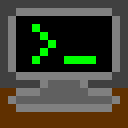Why is my code so inefficient?
Trying to simulate terrain generation on a 3D scale but it's just such a frame hog, its also really jittery?
I don't really understand why and I've searched everywhere and I just can't seem to grasp why.
chunk = class
constructor = function(offsetx, offsetz)
this.chunkId = 1
this.ox = offsetx
this.oz = offsetz
this.data = [] // storage (3d blocsks)
this.visibleBlocks = [] // flat list of visible blocks for fast draw
this.loaded = false
end
isSolid = function(xi, yi, zi)
if xi < 1 or yi < 1 or zi < 1 then return false end
if xi > this.data.length then return false end
if not this.data[xi] or not this.data[xi][yi] or not this.data[xi][yi][zi] then
return false
end
return true
end
initialize = function()
//generate all blocks
for z = -chunk_size/2 to chunk_size/2
for x = -chunk_size/2 to chunk_size/2
local height = min_height + noise.noise2D(x / scale, z / scale) * amplitude
for y = min_height to height
local xi = x + chunk_size/2 + 1
local yi = y + 1
local zi = z + chunk_size/2 + 1
if not this.data[xi] then this.data[xi] = [] end
if not this.data[xi][yi] then this.data[xi][yi] = [] end
local block = object
block_type = ""
position = object
x = x
y = y
z = z
end
end
this.data[xi][yi][zi] = block
end
end
end
// mark visble blocks and store in flat list
for xi = 1 to this.data.length
if this.data[xi] then
for yi = 1 to this.data[xi].length
if this.data[xi][yi] then
for zi = 1 to this.data[xi][yi].length
local block = this.data[xi][yi][zi]
if block then
if not this.isSolid(xi+1, yi, zi) or
not this.isSolid(xi-1, yi, zi) or
not this.isSolid(xi, yi+1, zi) or
not this.isSolid(xi, yi-1, zi) or
not this.isSolid(xi, yi, zi+1) or
not this.isSolid(xi, yi, zi-1) then
block.draw = true
this.visibleBlocks.push(block) // store to access ind raw loop
end
end
end
end
end
end
end
this.loaded = true
end
update = function()
// pass
end
draw = function()
if this.loaded then
// only loop/draw visible blocks
for block in this.visibleBlocks
cube(block.position.x, block.position.y, block.position.z)
end
end
end
end
I'm like 90% sure its the for loop in the draw function
draw = function()
if this.loaded then
// only loop/draw visible blocks
for block in this.visibleBlocks
cube(block.position.x, block.position.y, block.position.z)
end
end
end
But why does this cause so much lag/fps drops? I've tried reducing it by loading everything in the initialize function THEN drawing it into the draw function and only drawing the surface layer of blocks but that does pretty much nothing.
I'm honestly stumped.



